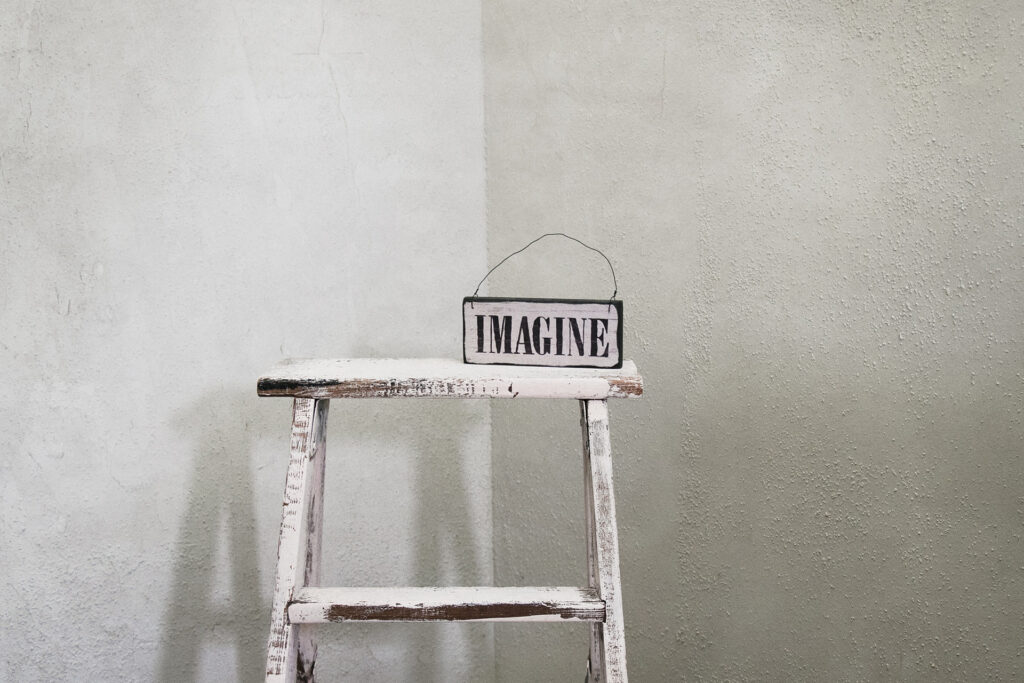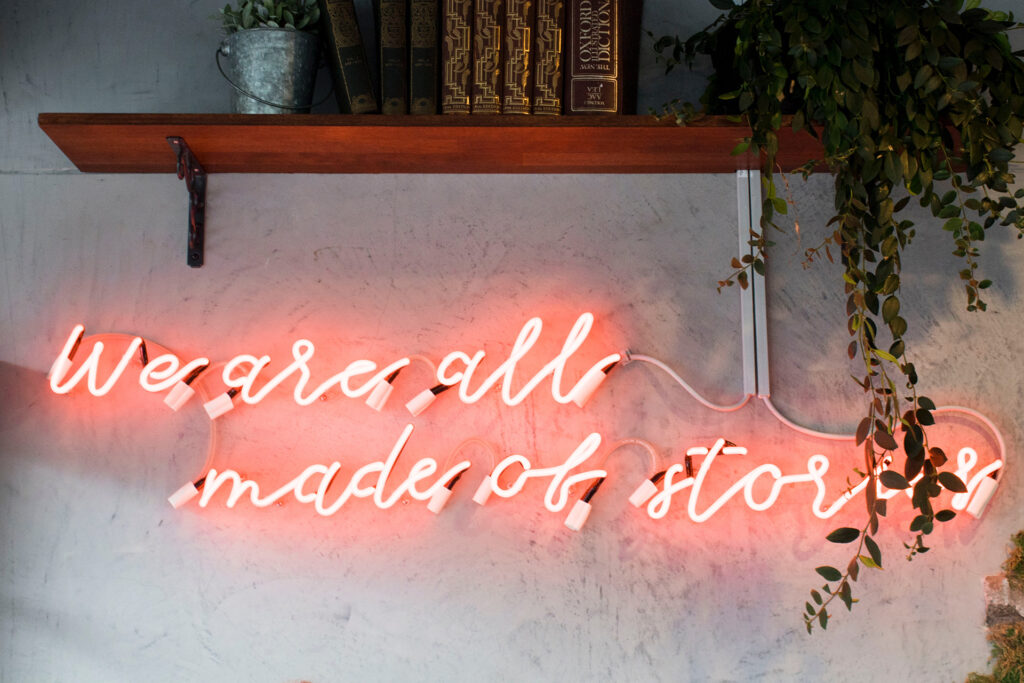Actor, director, producer and immersive experience designer Peter Holst-Beck explains the power of rapid prototyping and storytelling within the retail business, providing some ideas and tools that retailers and placemakers might want to consider to get people flocking back to their real world offer.
“Do you want to play?!”
In front of me stood my 8-year-old niece, a little girl with big, anticipating brown eyes and a long, curly ponytail. Her dress was a bit messed up, as if she’s been out running around for a while, and her fingernails showed that she’d clearly been digging in the soil.
“Sure,” I said.
I’m so much older than her, but she didn’t mind at all. We were outside in a park and there was a bench, a lake and some trees around us.
“Now: you are coming to my shop and I will show you some of my finest dresses,” she said.
“Okay,” I heard myself say, “Let’s get started”.
Suddenly, everything became magical. We found ourselves in an imaginary kingdom, and she told me how her dresses were made from the leaves from the trees and the grass from the ground. We saw ourselves reflected in the lake wearing crowns made of branches, and I was told the story about the princess who lived in the lake and only revealed herself when she was happily in love. I played along and had a lot of fun for the next hour!

Later on, I reflected on the experience. I had given her all kinds of challenges, pretending to be an old grumpy man looking for a hat, a wizard looking for a robe, and a giant looking for some oversized trousers. She responded promptly and came up with ideas, examples and stories of why her shop could deliver everything.
What we really did together was co-creation, rapid prototyping and exclusive storytelling.
I was totally immersed in her world. She controlled everything, even though I felt I could go in any direction. She would adapt but kept her focus as the shop owner.
“Every child is an artist. The problem is how to remain an artist once he grows up.”
Pablo Picasso
So now let’s pretend we’re all adults – but keep this childish and playful approach in mind.
As grown-ups we still have this inner child. We want to explore, be immersed, be imaginative and be delightfully surprised. We seek adventures and togetherness as human beings.
Right now we’re in the middle of a global pandemic – or at least at the tail end – and the lack of these basic needs is overwhelming. A lot of shop owners, malls, local communities and so on are confused and more than a bit worried. After a year of digital shopping and the ease of having goods delivered directly to your doorstep, will customers find their way back? Will they acknowledge that it’s really hard to compete on price compared to, for instance, Amazon, because of rent, staff, marketing and so on?
The answer is YES – they will of course find their way back. But it’s a different world now, and retailers need to compete with human interaction, immersive experiences and storytelling to avoid the customer going back to digital shopping after those first weeks of human connection have been satisfied.
The power of rapid prototyping

As a retailer, you need to take this matter seriously and think of new ways to communicate with locals and customers. Staff also need to be taught how to handle this situation.
So – what can you do? Rapid prototyping is an amazing tool to create new ideas in co-creation with the staff. You need to play – find the inner child and develop new approaches to adapt into the shop’s DNA.
A way to do this is to take a day out of the calendar together with the whole staff and invite some guests to see the results of the workshop later that day. Begin by making some basic rules:
- Be open to every idea.
- Do not discuss problems beforehand, as they might get solved during the workshop.
- Always keep in mind that one idea can lead to another and look at the bigger scale (flexible focus).
- Make a schedule of the day with strict deadlines and tryouts to avoid endless discussions.
- Appoint a skilled facilitator to keep things tight and clear.
Now you can start playing and having fun. Use your imagination. Put yourselves in the customer’s role. Remember how you’ve experienced other places – on a holiday, on the street or in an exhibition. Perhaps you can use some of those ideas? Do some role plays and try things out.
The results of your workshop should be presented at the end of the day. Invite close customers, your family, friends or whoever. What’s changed in the customer’s journey? What’s changed in your approach to the customer? And how can you interact and co-create internally?
If you are a larger organization with multiple employees, there’s an extra step you need to be aware of.
Divide your staff into three groups:
Group 1. The creative team – the ones who develop new ways to interact and to create experiences.
Group 2. The active team – the ones who perform and try out the ideas from the creative team.
Group 3. The guinea-pig team – the ones who try out the new shopping experience.
Having this extra step is all about communication between the different groups. Group one needs to explain exactly how they want group two to perform, and group two needs to communicate with group three while group one is watching from a distance without interfering.
So – can you really change a shopping experience within a single day? Yes, but of course it’s still a prototype. From here you need to discuss what worked and what didn’t. Did any problems occur that need fixing? Did we get some new ideas from interacting with the customers? Did we use our skills properly? Then the real work begins to adapt these ideas into the shop’s DNA and the mindset of the staff.
How to embed playful thinking in your experience

It all depends on your type of business, of course, but here are a few ideas that you might want to consider.
Learn how to be a storyteller
People love a good story. If you want to buy a piece of art, you love to hear about the artist, the technique, what inspired them and so on. We can do that with any product. Talk about the craftsmanship behind the product, the special textiles used, the history and so on. Learn how to be a good storyteller and use words and body language to immerse the customer into your shop, product and experience.
Be authentic
One of the worst things in a shopping experience is dress codes and stiff smiles from the staff. Who wants to interact with a robot? Uniqueness is key to stand out from the crowd. Allow your staff to be individuals and to have their own special ways to connect and be trustworthy. It’s a win-win situation. The staff feel relaxed, can have fun and laugh with the customers, and the customers in turn feel connected and special, seen and heard.
Make everyone feel welcome
In some parts of the world, in the souks of Marrakech for instance, the shopping experience can be very pushy indeed. But one thing I’ve noticed is how they often invite people in for a cup of tea – not only tourists, but also people from their neighborhood. So how about having a small stand with some hot water and tea bags for the customer? Even if they’re just there to take a look around, you’ll now have time to connect and have a talk. Don’t be pushy, but make them feel relaxed and welcomed.
Collaborate with your neighbors
If you’re in a mall, or on a shopping street, you’ll often have a lot of different shops around you. You probably know each other, but rarely use each other’s strengths. Organise events and experiences together. Or you can even share the space. Why not have a coffee shop together with an antique dealer? Or a bookseller with an optician? I know it’s a big deal to collaborate in this way, but joining forces on a bigger or smaller scale makes it all more interesting to the customer.
Encourage their inner explorer
People love to explore. Try to come up with ideas for how to make your shop interior and displays more interesting and involving. Use light, sound, and even scent to trigger the imagination of your customers. You can even ask a set designer to help you out. It’s enough to only decorate your windows – try be unique inside the store as well.
I hope this gives you some ideas for how to approach the grand reopening – try it out yourself or reach out to experience designers from the WXO to get you on the track. All that’s left to say is…
…do you want to play?
To get more insights from experts in the experience economy like Peter – and to be the first to know about our membership programme, events and more – sign up to the WXO community here.





